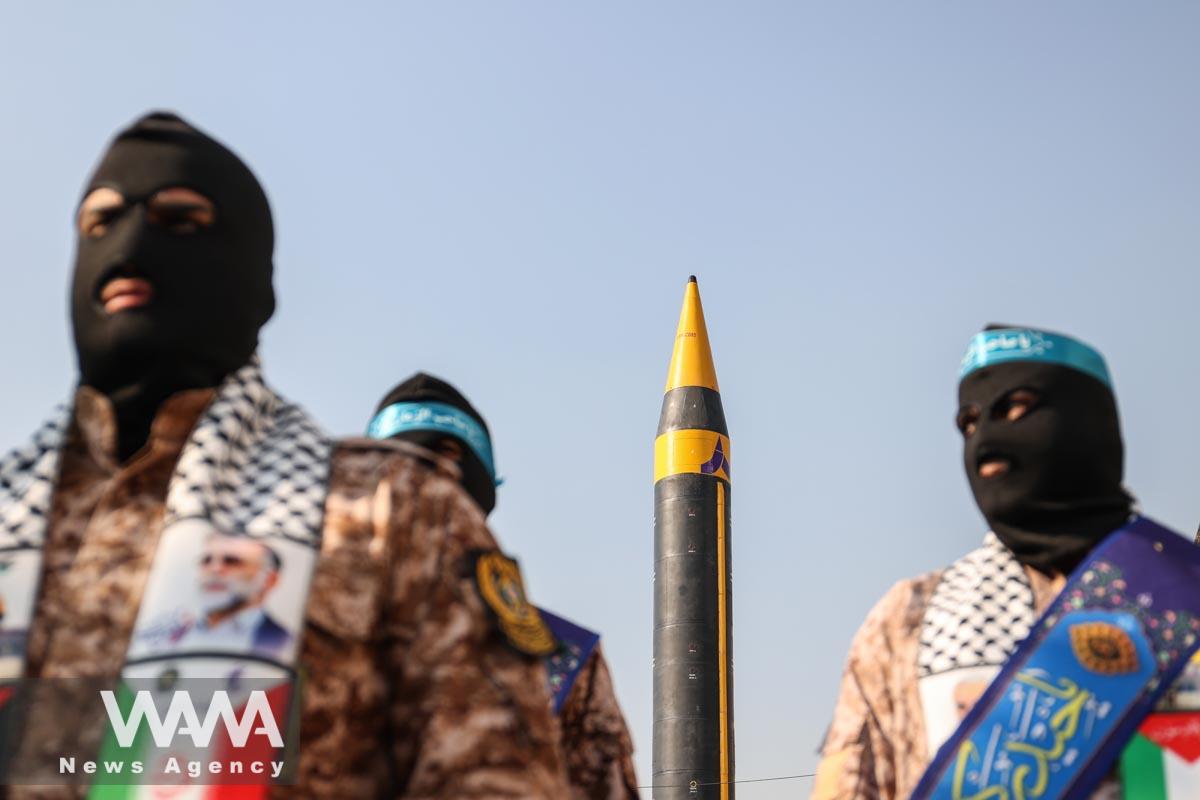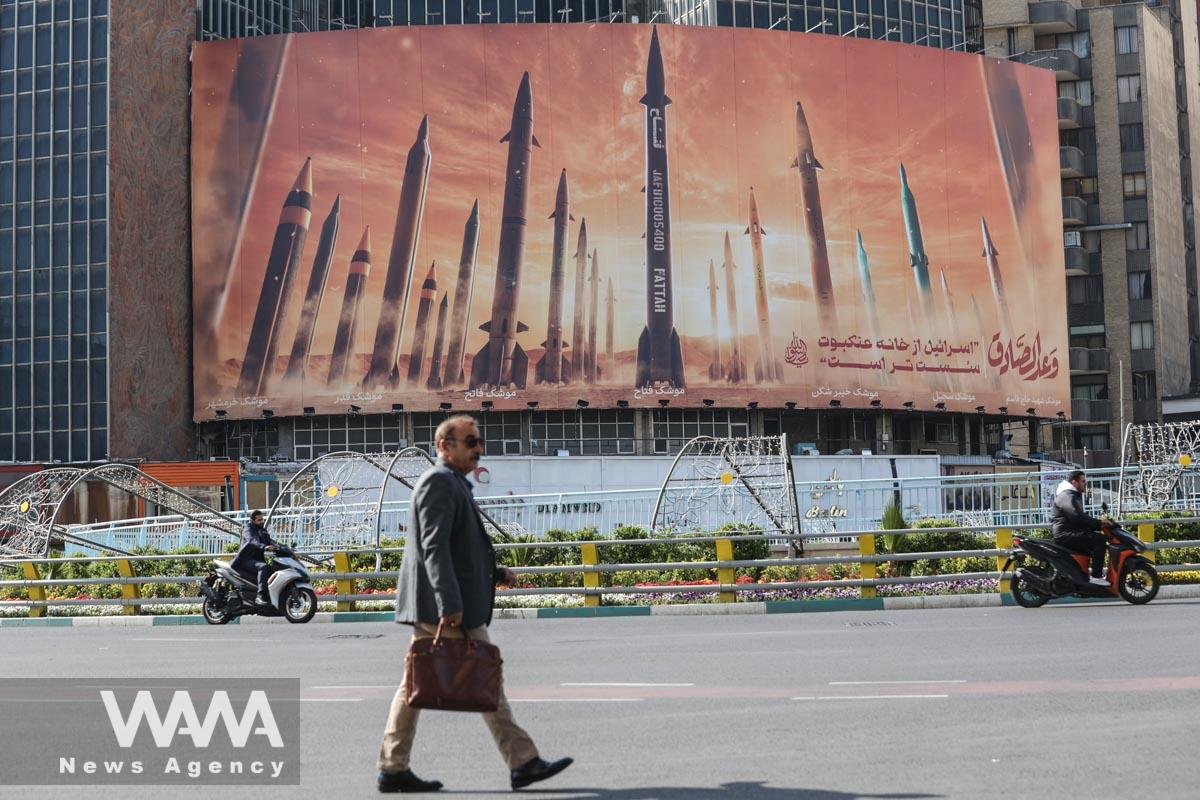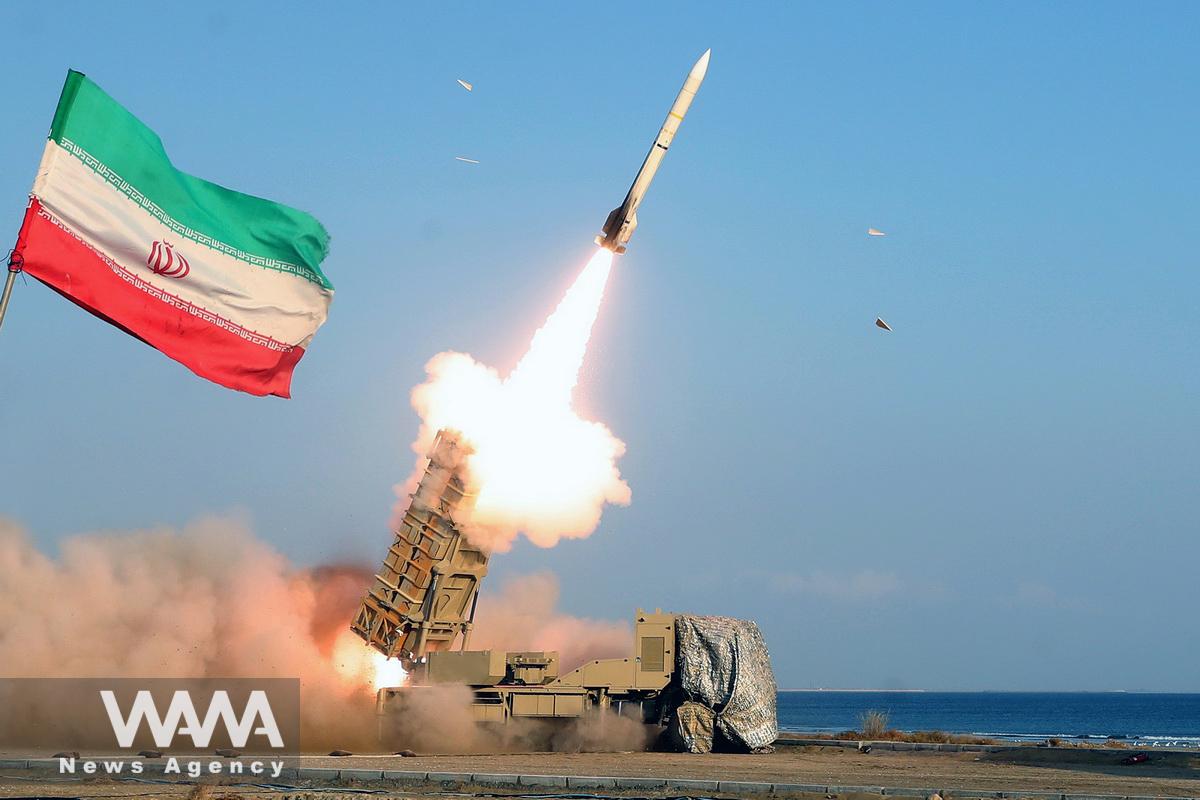True Promise 1: The World’s Largest Drone Attack From Iran to Israel
WANA (Apr 15) – One year ago, on April 14, Iran decided to shatter the illusion of Israeli “immunity.” An operation named True Promise wasn’t just an attack — it was a game-changer for the entire region.
A regime that had long boasted about its power behind the Iron Dome was, this time, directly targeted from Iranian soil — with over 300 projectiles launched simultaneously, including 185 drones, 110 surface-to-surface missiles, and 36 cruise missiles.

Israel’s Fear of IRGC’s New Missile Threat: Sejil, Fattah, and Khorramshahr Aimed at Occupied Territories
WANA (August 06) – On the night of April 13, 2024, in response to the multiple crimes of the Zionist regime, including the attack on the consular section of the Iranian embassy in Damascus and the martyrdom of several of our country’s commanders and military advisors in Syria, the Aerospace Force of the Islamic Revolutionary […]
Why Did Iran Strike?
On April 1, 2025, Israel carried out a precise, pre-planned attack on Iran’s consulate in Damascus — an assault that led to the death of seven IRGC members, including senior Quds Force commander Mohammad Reza Zahedi.
This was an undeniable violation of Iran’s diplomatic territory — as, under international law, consulate buildings are not considered part of the host country, but of the country they represent.
Following the attack, Iran sought recourse through the UN Security Council. But the Council not only failed to condemn Israel — it remained entirely silent.
The result? In accordance with Article 51 of the UN Charter, the Islamic Republic of Iran exercised its inherent right to self-defense — and thus began True Promise.
Contrary to Western media narratives, the attack was far from “neutralized.” It hit exactly where it was meant to.

An anti-Israel billboard with a picture of Iranian missiles is seen in a street in Tehran, Iran April 15, 2024. Majid Asgaripour/WANA (West Asia News Agency)
Lie #1: “Iran’s Operation Failed!”
Israeli media rushed to claim that 99% of the missiles were intercepted and the attack was ineffective. But what really happened?
The Negev Airbase (Nevatim) was damaged. Several F-35 fighter jets were grounded. Israel’s air defense systems were overwhelmed. The U.S. and U.K. had to intervene. And still — some missiles penetrated the Iron Dome.
If this is what a “complete failure” looks like, what does success even mean?

IRGC’s Spokesperson: Israel’s Skies Are Defenseless Against Iran
WANA (Jan 06) – Speaking at a press conference this afternoon during the Great Prophet 19 military exercise, Brigadier General Ali Mohammad Naeini, spokesperson for Iran’s Islamic Revolutionary Guard Corps (IRGC), delivered strong warnings to Israel. He stated, “The enemy knows that the skies over the occupied territories are open and defenseless for us. We […]
Lie #2: “Iran Warned in Advance — So It Was Just Theater!”
Some argued that because Iran issued a warning, the attack was symbolic or performative. Smarter analysts, however, saw it differently: a clear sign of Iran’s strategic maturity.
A warned attack that still managed to strike its targets? That’s a clear success. Iran deliberately targeted military bases, not civilian areas — not out of weakness, but to ensure legal legitimacy and maintain strategic initiative.
Lie #3: “Israel Responded with Force!”
Israel’s limited strike near Isfahan caused no casualties. Even sensitive nuclear sites remained untouched. The IRGC offered no response — because, simply, there was nothing to respond to.
The reality? True Promise was a calculated, strategic blow. Israel’s response was a mere PR move.

An anti-Israel billboard is displayed on a street in Tehran, Iran July 31, 2024. Majid Asgaripour/WANA (West Asia News Agency)
Lie #4: “Iran’s Attack Was Ineffective — Israel Won!”
Media outlets like The Times and Haaretz tried to paint Iran’s operation as weak.
But here’s the question: If it was truly ineffective, why did the U.S., U.K., France, Jordan, Saudi Arabia, and the UAE all jump in to intercept?
The truth is too obvious to ignore: For the first time in 75 years, Israel faced a direct military attack — from another country, from a formal army.
True Promise 1 wasn’t just an attack — it was the end of an illusion. For decades, Israel believed the Iron Dome ensured its safety. But on April 13, 2025, that belief was shattered.
Iran showed it could launch precision strikes on sensitive Israeli infrastructure — from within its own borders. More importantly, it instilled deep fear in Israeli public perception.
True Promise 1 Was the World’s Largest Regional Drone Operation
Brigadier General Naeini, spokesperson for the Islamic Revolutionary Guard Corps (#IRGC), in a meeting with a group of media representatives, referring to the dimensions and…#Iran #Israel https://t.co/yohx0kG2wU
— WANA News Agency (@WANAIran) April 15, 2025
The Art of Deception: A Three-Front Strike
True Promise was a masterclass in military deception. Iran’s three-phase operation not only damaged Israel militarily — it also caught its intelligence and psychological defenses off guard:
Phase 1: Shahed-131 and Shahed-136 drones entered Israeli airspace slowly but steadily. Their role? Drain air defenses, trigger a prolonged state of alert, and clear the path for the main wave.
Phase 2: The Axis of Resistance was activated. Hezbollah, Ansarullah (Houthis), and Iraqi groups launched attacks from three directions, forcing Israel to split its focus.
Phase 3: Iran fired Kheibar Shekan, Emad, and Paveh missiles from various cities, targeting key airbases like Nevatim and Ramon — which were used in the Damascus consulate attack.
A subtle yet symbolic detail: some missiles struck exactly at 1:20 AM — the time General Qassem Soleimani was assassinated. A move not just military, but deeply symbolic and psychological.

A sentence by Martyr Soleimani in Hebrew: “Every night, thinking about defeating enemies.”
Redefining Deterrence
True Promise sent a clear message to the world: Anyone who crosses Iran’s red lines will face more than just political reactions — they will pay real, tangible, multi-layered costs.
Even though the conflict didn’t escalate into a full-scale war, the operation reshaped the regional balance of deterrence — this time, in Iran’s favor.

True Promise 3: Redefining Regional Dynamics or Empowering Enemies?
WANA (Dec 16) – The fall of Bashar al-Assad’s government and the domination of terrorist groups over Syria marks a dangerous turning point for the Axis of Resistance. For years, Syria served as a key link in this axis, and the Islamic Republic of Iran’s support for the legitimate government of Bashar al-Assad, alongside Hezbollah, […]













